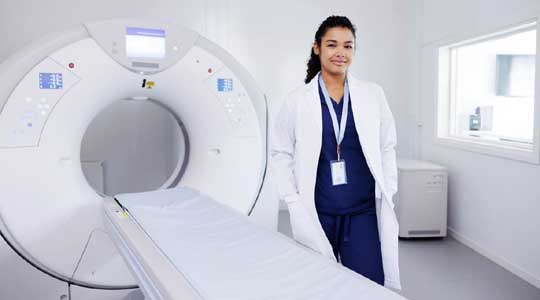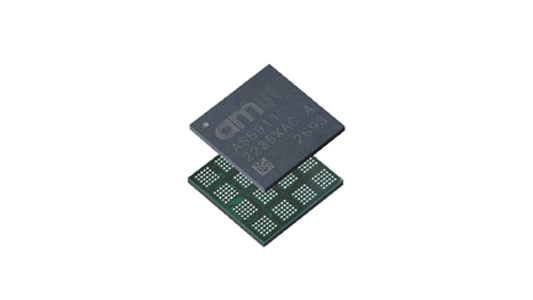ams OSRAM has introduced the AS5911, a 256-channel analog-to- digital converter for digitizing signals from photodiode arrays in high-performance computed tomography (CT) scanners.
Josef Pertl, Senior Product Manager for medical imaging at ams OSRAM, said: ‘The AS5911 is superior across the board in the domain of specialist ADCs for high-end CT detectors today, smaller, lower-power, high performance, more integrated, and easier for system designers to work with. Use of the AS5911 reduces complexity for manufacturers of CT detector modules of a plurality of form factors, including 4-side buttable CT detectors. It provides best-in-class power to noise performance to achieve highest image quality of next generation CT scanners. This helps medical practitioners to improve diagnostic value, and it ultimately leads to better outcomes for patients.’

The AS5911, housed in a 14mm x 14mm FBGA, is a system-in-package solution that performs simultaneous current-to-digital conversion of the outputs from 256 photodiodes in a CT detector.
Smaller than current competing specialist ADCs for CT detectors, the AS5911 has a reduced footprint that facilitates its integration in a variety of detector form factors, including 4-side buttable solutions thanks to its reduced external bill of materials (BOM) and embedded components. The AS5911 leads to lower system complexity by having integrated LDO voltage regulators, reference voltages, a temperature sensor, supply decoupling capacitors and on-chip calibration features.
The power dissipation is yet an additional significant benefit of the AS5911. At just 1.25mW per channel in low-power mode, it consumes less power than existing products on the market. Its low power consumption facilitates temperature stabilization strategies by CT scanner manufacturers, ultimately yielding better system performance and potential savings in thermal management.
The ams OSRAM proprietary ADC architecture, which features zero dead time, exhibits an excellent power-to-noise trade off. In low-noise mode, the input-referred noise is below 0.29fC at an input current range of 0.5µA. Low noise is a hallmark of high-performance CT detectors, a critical aspect for image quality, specifically at low X-ray dose.
The AS5911 features on-chip calibration functions for parameters such as offset voltage, linearity, offset charge and leakage current. This allows to automatically set the photodiode and the front-end at their ideal operating point, compensating for offsets and non-linearities of the signal chain. The embedded auto-calibration functions reduce development effort in the data acquisition system and potentially enable the use of a lower-cost FPGA requiring less computational power.
The reduction of complexity of CT detector module design is also supported by features such as built-in diagnostics and the freedom to operate the device in two different power supply strategies. The device can operate in true ground mode and single analog supply. Full-scale range, power modes and digital readout features, are configurable over a SPI-compatible serial interface, as well as the data output modes of the digital LVDS interface.
The AS5911 is available for sampling now. Evaluation boards are available directly from ams OSRAM for performance measurements.
For more information, visit website.












